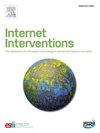Young people's compliance with the Experience Sampling Method (ESM): Examining patterns, predictors and associations with well-being and mental health
IF 4.1
2区 医学
Q1 HEALTH CARE SCIENCES & SERVICES
Internet Interventions-The Application of Information Technology in Mental and Behavioural Health
Pub Date : 2025-07-08
DOI:10.1016/j.invent.2025.100859
引用次数: 0
Abstract
The Experience Sampling Method (ESM) can help young people gain insight into their fluctuating emotions through multiple daily surveys. This can act as an intervention to improve well-being and mental health. However, the effectiveness of ESM interventions is expected to depend on compliance, i.e., how often participants respond to these surveys. We aimed to understand compliance patterns among young people during an ESM-based intervention, explored predictors of these patterns, and examined if the intervention's impact on well-being and mental health varied with compliance levels.
Dutch adolescents and young adults (N = 1139, 12–25 years, mean age = 17.67; 79 % female) completed baseline questionnaires, responded to five daily ESM surveys over three weeks using the Grow It! app, and completed follow-up questionnaires.
Despite overall low compliance (mean compliance = 33.8 %), latent class growth analyses identified four compliance patterns: stable high (N = 176; M = 78.8 %), stable medium (N = 193; M = 50.1 %), high initial and decreasing (N = 272; M = 30.9 %), and low initial and decreasing (N = 498; M = 13.2 %). These patterns were not consistently associated with age, gender, education, baseline well-being, or depressive and anxiety symptoms, and did not influence the intervention's effect on well-being and mental health outcomes.
We identified specific ESM compliance patterns among young people but found no clear predictors or outcomes of these patterns. To improve compliance and intervention effectiveness, future ESM interventions can potentially be enhanced by personalized designs, incorporating intrinsic and extrinsic motivators, and investigating situational factors and additional participant characteristics.
青年人对经验抽样法的遵守情况:检查与幸福和心理健康有关的模式、预测因素和联系
经验抽样法(ESM)可以帮助年轻人通过多次日常调查来了解他们波动的情绪。这可以作为一种干预措施,改善幸福感和心理健康。然而,预计ESM干预措施的有效性取决于遵守情况,即参与者对这些调查的反应频率。我们的目的是了解在基于esm的干预中年轻人的依从性模式,探索这些模式的预测因素,并检查干预对幸福感和心理健康的影响是否随依从性水平而变化。荷兰青少年和年轻人(N = 1139, 12-25岁,平均年龄= 17.67;(79%女性)完成了基线问卷,在三周内使用“Grow It!”App,并完成后续调查问卷。尽管总体依从性较低(平均依从性= 33.8%),潜在类别增长分析确定了四种依从性模式:稳定的高依从性(N = 176;M = 78.8%),稳定培养基(N = 193;M = 50.1%),初始值高且呈下降趋势(N = 272;M = 30.9%),初始值低且呈递减趋势(N = 498;m = 13.2%)。这些模式与年龄、性别、教育程度、基线幸福感或抑郁和焦虑症状并不一致相关,也不影响干预对幸福感和心理健康结果的影响。我们确定了年轻人中特定的ESM依从模式,但没有发现这些模式的明确预测因素或结果。为了提高依从性和干预效果,未来的ESM干预可以通过个性化设计、结合内在和外在激励因素、调查情境因素和其他参与者特征来增强。
本文章由计算机程序翻译,如有差异,请以英文原文为准。
求助全文
约1分钟内获得全文
求助全文
来源期刊

Internet Interventions-The Application of Information Technology in Mental and Behavioural Health
Medicine-Health Informatics
CiteScore
6.50
自引率
9.30%
发文量
94
审稿时长
6 weeks
期刊介绍:
Official Journal of the European Society for Research on Internet Interventions (ESRII) and the International Society for Research on Internet Interventions (ISRII).
The aim of Internet Interventions is to publish scientific, peer-reviewed, high-impact research on Internet interventions and related areas.
Internet Interventions welcomes papers on the following subjects:
• Intervention studies targeting the promotion of mental health and featuring the Internet and/or technologies using the Internet as an underlying technology, e.g. computers, smartphone devices, tablets, sensors
• Implementation and dissemination of Internet interventions
• Integration of Internet interventions into existing systems of care
• Descriptions of development and deployment infrastructures
• Internet intervention methodology and theory papers
• Internet-based epidemiology
• Descriptions of new Internet-based technologies and experiments with clinical applications
• Economics of internet interventions (cost-effectiveness)
• Health care policy and Internet interventions
• The role of culture in Internet intervention
• Internet psychometrics
• Ethical issues pertaining to Internet interventions and measurements
• Human-computer interaction and usability research with clinical implications
• Systematic reviews and meta-analysis on Internet interventions
 求助内容:
求助内容: 应助结果提醒方式:
应助结果提醒方式:


